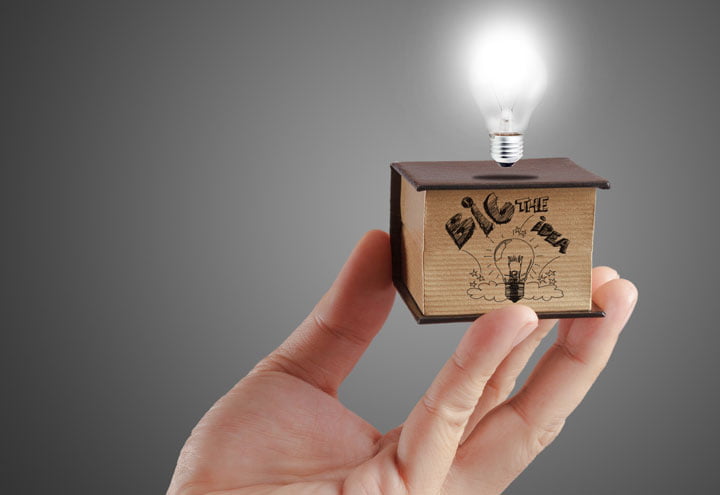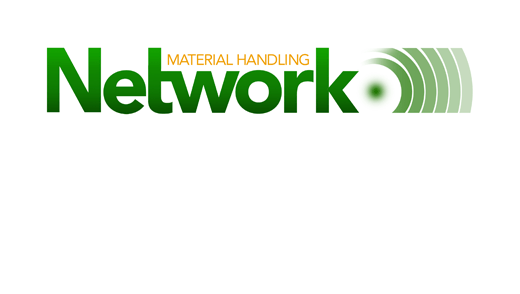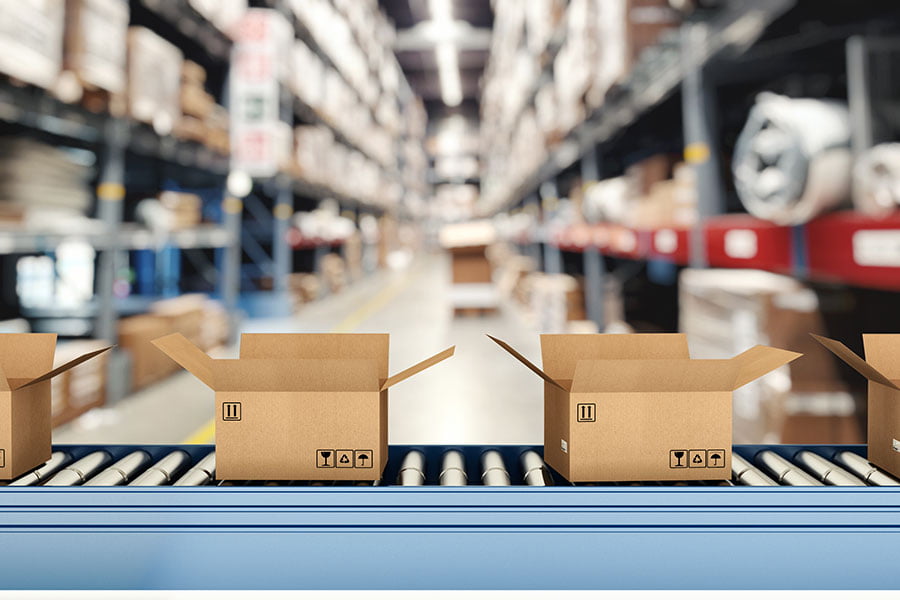Published June 21, 2004
Although lean thinking is typically applied to manufacturing lean techniques and focus are applicable anywhere there are processes to improve, including the entire supply chain. A lean supply chain is one that produces just what and how much is needed, when it is needed, and where it is needed.
The underlying theme in lean thinking is to produce more or do more with fewer resources while giving the end customer exactly what he or she wants. This means focusing on each product and its value stream. To do this, organizations must be ready to ask and understand which activities truly create value and which ones are wasteful. The most important thing to remember is that lean is not simply about eliminating waste-it is about eliminating waste and enhancing value.
The Concepts of Value and Waste
Value, in the context of lean, is defined as something that the customer is willing to pay for. Value-adding activities transform materials and information into something a customer wants. Non-value-adding activities consume resources and do not directly contribute to the end result desired by the customer. Waste, therefore, is defined as anything that does not add value from the customer’s perspective. Examples of process wastes are defective products, overproduction, inventories, excess motion, processing steps, transportation, and waiting.
Consider the non-manufacturing example of a flight to the Bahamas. The value-adding part of that process is the actual flight itself. The non-value-added parts of that process are driving to the airport, parking at the airport, walking to the terminal and then to check-in, waiting in line at check-in, walking to the security check, and so on. Many times the non-value-added time far exceeds the value-added time in this type of process. Where should our improvement efforts be focused-on the non value-added steps or on making the plane fly faster?
Understanding the difference between value and waste and value-added and non-value-added processes is critical to understanding lean. Sometimes it is not easy to discern the difference when looking at an entire supply chain. The best way is to look at the components of the supply chain and apply lean thinking to each one and determine how to link the processes to reduce waste.
Creating Value
Lean principles focus on creating value by:
- Specifying value from the perspective of the end customer
- Determining a value system by:
- Identifying all of the steps required to create value
- Mapping the value stream
- Challenging every step by asking why five times
- Lining up value, creating steps so they occur in rapid sequence
- Creating flow with capable, available, and adequate processes
- Pulling materials, parts, products, and information from customers
- Continuously improving to reduce and eliminate waste
The value stream consists of the value-adding activities required to design, order, and provide a product from concept to launch, order to delivery, and raw materials to customers. To develop a value stream map for a product, you select a product family and collect process information. Then, you map the steps in sequence and by information flows; this is called a current-state map. The current-state map provides a clear picture of the processing steps and information flow for the process as it exists today. Next, you search the map for improvement opportunities using the concepts of lean, and create a future-state map. This will portray a vision of the future for the process or supply chain you are creating. This future-state map helps you to visualize the roadmap to get from the current state to the future state.
Mapping the value stream for the supply chain is a similar process. However, the current-state map includes product flow, transportation links, defects and delivery time and steps, and information flow. After creating the current-state map for the supply chain’s value stream, supply chain partners should scrutinize it for bottlenecks, waste, and process improvements. They should use what they discover to create future-state maps for the supply chain. An ideal-state map can also be created that provides a vision of how the supply chain could look if perfect integration of all components were to occur. This is in effect an entitlement map for the supply chain process.
Here’s how it works: A current-state map might indicate that flow within facilities is well defined, but that transportation methods between facilities is creating excess inventory and is not cost effective. The current state map may also show a weakness in the information flow that is not adding value to the process. The future-state map should create flow between facilities, leveling pull within each facility, and eliminating waste. The method for leveling pull might be to install frequent transport runs or milk runs. Information flow could be improved by installing a Web-based process to allow real-time flow of information between all supply chain partners as demand changes. The ideal-state map of this supply chain might have a greatly compressed value system with relocated operations and short transportation deliveries.
“Waste” Reduction
The “Waste” reduction process begins with the question “What can we do to improve?” Some answers may include:
- Stop defective products at their source
- Flow processes together or change the physical relationship of components of the process
- Eliminate excess material handling or costly handling steps
- Eliminate or reduce pointless process steps
- Reduce the time spent waiting for parts, orders, other people, or information
In manufacturing environments, these waste reductions create the benefits of reduced manufacturing cycle time, reduced labor expenditures, improved product quality, space savings, reduced inventory, and quicker response to the customer. When waste is reduced or eliminated across the supply chain, overall cycle time is improved, labor and staff costs are reduced, product quality and delivery are improved, inventories are reduced, and customer lead-times are shortened. The net effect is the entire supply chain is more efficient and responsive to customer needs.
Components of the Lean Supply Chain
Lean Suppliers
Lean suppliers are able to respond to changes. Their prices are generally lower due to the efficiencies of lean processes, and their quality has improved to the point that incoming inspection at the next link is not needed. Lean suppliers deliver on time and their culture is one of continuous improvement.
To develop lean suppliers, organizations should include suppliers in their value stream. They should encourage suppliers to make the lean transformation and involve them in lean activities. This will help them fix problems and share savings. In turn, they can help their suppliers and set continually declining price targets and increasing quality goals.
Lean Procurement
Some lean procurement processes are e-procurement and automated procurement. E-procurement conducts transactions, strategic sourcing, bidding, and reverse auctions using Web-based applications. Automated procurement uses software that removes the human element from multiple procurement functions and integrates with financials.
The key to lean procurement is visibility. Suppliers must be able to “see” into their customers’ operations and customers must be able to “see” into their suppliers’ operations. Organizations should map the current value stream, and together create a future value stream in the procurement process. They should create a flow of information while establishing a pull of information and products.
Lean Manufacturing
Lean manufacturing systems produce what the customer wants, in the quantity the customer wants, when the customer wants it, and with minimum resources. Lean efforts typically start in manufacturing because they free up resources for continuous improvement in other areas, and create a pull on the rest of the organization. Applying lean concepts to manufacturing typically presents the greatest opportunity for cost reduction and quality improvement; however, many organizations have received huge benefits from lean concepts in other functions.
Lean Warehousing
Lean warehousing means eliminating non-value added steps and waste in product storage processes. Typical warehousing functions are:
- Receiving
- Put-away/storing
- Replenishment
- Picking
- Packing
- Shipping
Warehousing waste can be found throughout the storage process including:
- Defective products which create returns
- Overproduction or over shipment of products
- Excess inventories which require additional space and reduce warehousing efficiency
- Excess motion and handling
- Inefficiencies and unnecessary processing steps
- Transportation steps and distances
- Waiting for parts, materials and information
- Information processes
Each step in the warehousing process should be examined critically to see where unnecessary, repetitive, and non-value-added activities might be so that they may be eliminated.
Lean Transportation
Lean concepts in transportation include:
- Core carrier programs
- Improved transportation administrative processes and automated functions
- Optimized mode selection and pooling orders
- Combined multi-stop truckloads
- Crossdocking
- Right sizing equipment
- Import/export transportation processes
- Inbound transportation and backhauls
The keys to accomplishing the concepts above include mapping the value stream, creating flow, reducing waste in processes, eliminating non-value-added activities and using pull processes.
Lean Customers
Lean customers understand their business needs and therefore can specify meaningful requirements. They value speed and flexibility and expect high levels of delivery performance and quality. Lean customers are interested in establishing effective partnerships-they are always seeking methods of continuous improvement in the total supply chain to reduce costs. Lean customers expect value from the products they purchase and provide value to the consumers who they interact with.
Benefits of Lean Systems
Speed and Responsiveness to Customers
Lean systems allow a supply chain to not only to be more efficient, but also faster. As the culture of lean takes over the entire supply chain, all links increase their velocity. A culture of rapid response and faster decisions becomes the expectation and the norm. This does not mean that decisions are made without careful thought. It simply means that a “bias for action” becomes the new corporate culture and anything less will not be tolerated. Slow response or no response becomes the exception, rather than the rule.
Reduced Inventories
In the lean paradigm, inventory is considered waste. Many would argue this point, but manufacturing can take place efficiently with little or no raw material, work in process (WIP), or finished goods inventory.
Many companies today produce directly into trailers and maintain no other finished goods inventory. All quality inspections and checks are performed within the process, rather than after production is complete. In this true make-to-order scenario, all goods are shipped directly to the next link in the supply chain when the trailer is full, and overproduction is not possible and cannot be tolerated. No space is designated to store finished goods. The system is not designed to carry them.
Applying one-piece flow and pull systems can reduce WIP dramatically. A Kanban or visual signal for more goods to be moved forward to the next process can accomplish this procedure. Although the ultimate goal is to eliminate WIP, minimal WIP is normally the result. The elimination of bottlenecks is one goal of a lean supply chain, but a bottleneck will always exist to some degree. As a result, WIP must always exist in front of a bottleneck or the bottleneck operation will be starved and will stop.
Raw material inventory is a different matter. Although the leanest organizations have arranged just in time deliveries to support manufacturing, this approach requires the absolute highest degree of competency and coordination within the supply chain.
Reduced Costs
Traditional mass production tries to minimize unit costs by increasing total production over the life cycle of the product. High development costs are the result of this model. To recover the enormous development and initial capital costs sunk into the product before it was produced, mass producers forecast and run long production cycles for each SKU. Consumer preferences and variety suffer in this scenario. Costs still need to be minimized, but not at the expense of what more sophisticated consumers now demand.
Improved Customer Satisfaction
Lean promotes minimizing new product development time and expense. This delivers the product to market faster, making it easier to incorporate current requirements into the product. Lean also promotes the use of less capital-intensive machines, tools, and fixtures, which results in more flexibility and less initial cost to recover. As a result, product life cycles may be shorter and product developments incorporated in newer versions of the product more frequently. Profitability does not suffer and brand loyalty is increased, as customers prefer to buy products and services from a perceived innovator.
Supply Chain as a Competitive Weapon
A strong supply chain enables the member companies to align themselves with each other and to coordinate their continuous improvement efforts. This synthesis enables even small firms to participate in the results of lean efforts. Competitive advantage and leadership in the global marketplace can only be gained by applying lean principles to the supply chain. Thought, commitment, planning, collaboration, and a path forward are required.
Path Forward to a Lean Supply Chain
Lean is a cooperative process for survival and for success. Supply chains that want to grow and continue to improve must adopt lean. Lean concepts require an attitude of continuous improvement with a bias for action. The concepts of lean apply to all elements of the supply chain, including support departments such as product development, quality, human resources, marketing, finance, purchasing, and distribution. The challenge is to bring all of these areas out of their traditional silos and make them work together to reduce waste and create flow. Duplication and a lack of appropriate and timely communication run rampant in these traditional organizations. A lean supply chain is proactive and plans for the unexpected by positioning all resources for effectiveness. Downturns in demand can be addressed without layoffs or significant productivity losses.
Leaning “other” areas presents a larger challenge than it does in manufacturing. Supervisors and factory workers embrace change that results in making their lives less complicated and more successful. In the hierarchy of support areas, it is more challenging for the people to understand how lean can benefit them. The answer is simple: What benefits the organization as a whole benefits the supply chain.
Because the Internet provides us with unprecedented opportunities for sharing information and conducting transactions across the supply chain, companies should have a sense of urgency about adopting lean concepts. But all chain partners have to be on the same playing field, and the lean concept is intended to let everyone reach new levels of efficiency and effectiveness. Supply chain leaders should not delay-it’s urgent to act now to implement lean concepts in the supply chain.



